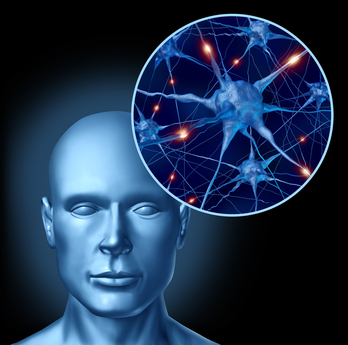By Mary Dickie
Every day in Canada, an average of 10 people die by suicide, and as many as 135 others are profoundly affected by each suicide loss. And yet we don’t know how to accurately predict suicide, or even how to fully characterize it.
Why do some depressed people contemplate suicide constantly and others never even consider it? What does the brain of a suicidal person look like, compared to the brain of someone who’s depressed, but not suicidal? Could understanding these differences lead to new ways to treat depression and prevent suicide?
These are the questions that preoccupy Dr. Sakina Rizvi, a scientist at the Arthur Sommer Rotenberg Suicide and Depression Studies Unit at St. Michael’s Hospital.
Dr. Rizvi’s project, The Biomarkers of Suicidality, was recently chosen as the second recipient of a $190,000 research grant from St. Michael’s Research Innovation Council (RIC), a group of St. Michael’s Foundation donors who pool their funds, evaluate research applications and select high-potential projects to support.
The RIC funding will help Dr. Rizvi expand her research from a pilot to a much larger study. She says she’s excited and thankful, albeit a bit surprised, since despite suicide’s devastating impact on society, it doesn’t get the funding that other major illnesses receive.
“The World Health Organization reported that mental health disorders account for the majority of disability globally, but only a small percentage of research funding,” she says.
In fact, Dr. Rizvi’s is the only program doing this kind of work in Canada. “I think it’s something that people have a hard time looking at,” she explains. “It’s not visible, and there’s still a lot of stigma around it.”
Dr. Rizvi’s research background is in treatment-resistant depression, studying patients who’ve tried multiple therapies.
“Of course I’d worked with research participants experiencing suicidality, but I’d never looked at it as its own entity,” she explains. “Once I started, I was shocked to find how little neurobiological research had been done. I think it’s partially because suicide risk is seen as a symptom of a mental illness as opposed to something on its own.”
She says in her research about half of treatment-resistant patients seem to be more at risk of suicide, and she wants to know why.
“Even with all else being equal, there’s something different about the group that will actually make a suicide attempt,” she says. “That’s why research like this is so important, because we don’t really know who they are. For a clinician, it’s very challenging to identify the person who is likely to make an attempt and needs intervention.”
With RIC support, Dr. Rizvi’s project will focus on two areas: understanding the neurobiological mechanisms behind suicide, and integrating what’s already known about it into a cohesive model so new treatments can be developed. That’s why Dr. Rizvi is examining not just the biology of a patient’s brain—including activity across brain networks—but also their psychological risk factors and social determinants.
“It’s a mistake to look at biology in isolation, because we’re not just biological beings,” Dr. Rizvi explains. “I try to put it into context. The different pieces interact with each other. It’s important to understand how it all works together if we’re going to be able to make treatments that impact people’s lives.”
Dr. Rizvi will scan the study participants’ brains to look at their structures and connections, memory and attention resources, and how they respond to rewards and to pain.
“There might be differences in brain volume in areas that are important for emotion regulation and decision making. There might be differences in certain neurotransmitter systems, in how the brain is connected,” she says. “We are starting to see some of those differences, but we’re not anywhere near the point where we can look at a scan and say, ‘That’s a suicidal brain’—and that’s why we need to do more research.”
Dr. Rizvi says that people at high risk for suicide tend to have difficulty focusing their attention, don’t experience rewards as positively as others do, and have higher levels of psychological pain and, interestingly, higher tolerance of physical pain. Why?
“My hypothesis is that psychological pain overburdens the neural resources normally dedicated to focal attention,” she says. “The pain is recruiting pathways and areas of the brain needed for attention, so people don’t have the resources left to pay attention to things that might otherwise be attention-grabbing, like physical pain or rewards. I’m looking at the interaction of how we pay attention to things, how we find things rewarding and how we experience pain, and in what ways that can lead to increased suicide risk.”
A neuroscientist by training, Dr. Rizvi believes that researchers also have a responsibility to do advocacy and mental health education, which is why, along with her work exploring suicide, she volunteers as a grief counsellor for suicide loss survivors.
“It’s humbling to sit with somebody in that pain and help them work through the devastating effects that kind of loss has,” she says.
“Suicide doesn’t affect just one person, it affects communities and generations, and people are not paying enough attention to it. That’s why funding like this grant from the Research Innovation Council can go so far. It helps to run the study, and also to recruit the research talent who can build capacity in this area and really push it forward.”
Mary Dickie works in communications at Unity Health.




